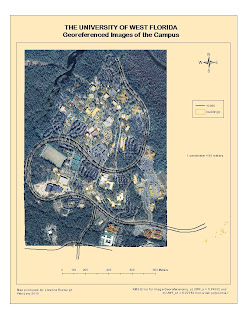
Thursday, February 25, 2010
WEEK 6 LAB: GEOREFERENCING

Sunday, February 21, 2010
WEEK 5 LAB: DATA SEARCH
MAP 1. RASTER DATASETS

MAP 2. INVASIVE PLANTS AND STRATEGIC HABITAT CONSERVATION AREAS

MAP 3. PUBLIC LANDS, HYDROGRAPHY, ROADS AND CITIES
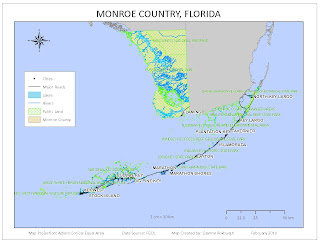
I was excited about the fact that I was doing Monroe County, the Everglades State. But it was challenging to try to represent the public lands and the hydrographic features, since much of the state seems to be under water and public land. The Keys were particularly challenging since they are so small relative to the mainland, but also very long for an inset map. Hopefully with more experience I will learn how to do a better job.
Thursday, February 11, 2010
WEEK 4: HAITI EARTHQUAKE
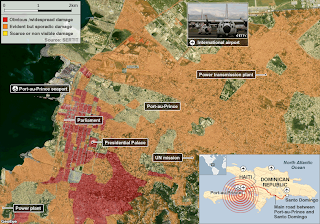
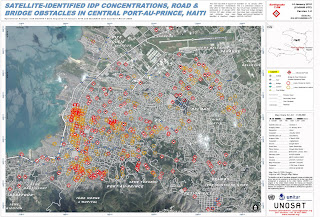
With such awesome technology at the relief agencies fingertips one does rather wonder what went wrong. However, this being the poorest country in the western hemisphere (aided and abetted by the IMF and their ilk I see), I expect the logistical challenges to the relief efforts would be similar to here in Malawi, where we had our own little earthquake hours before the Haiti Earthquake struck. No casualties for that one, although 1000s of people remain homeless in Karonga district after a flurry of earthquakes over the past few months.
Wednesday, February 10, 2010
WEEK 4 LAB: PROJECTIONS OF FLORIDA

The area for Escambia county differed the least between projections while that for Miami-Dade differed the most. Escambia is the most northerly county and Miami-Dade the most southerly. This difference probably occurred because we used State Plane Florida North and UTM 16 N. Escambia county falls within these zones, whereas the other two counties fall within UTM 17 N and one of the other State Plane zones. We would therefore expect more distortion of areas in counties within these zones. The Albers projection should show the correct area of each county as it is an equal area projection.
Friday, February 5, 2010
WEEK 3 LAB: MEXICO
MAP 1
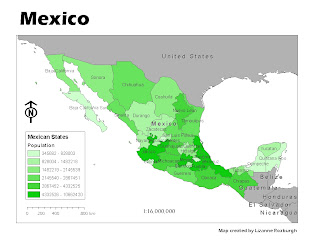
Clear, simple and straightforward. I have now learnt how to move the continents around and place them better within the map. So much for continental drift ...
MAP 2
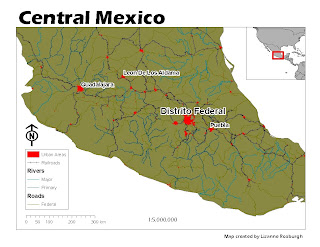 This was a difficult map to do in terms of making it look good. The map is cluttered and I am not sure what the purpose of this map would be (other than to have us practice making a map). I stumbled upon the setting to add a halo around the text and I think it helps to make the annotations on the map clearer.
This was a difficult map to do in terms of making it look good. The map is cluttered and I am not sure what the purpose of this map would be (other than to have us practice making a map). I stumbled upon the setting to add a halo around the text and I think it helps to make the annotations on the map clearer.MAP 3
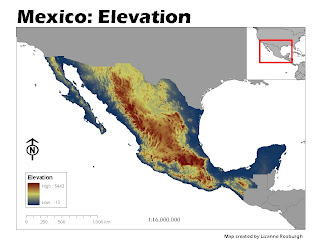
My first attempt to display a raster data set. I would not have thought so, but I like the contrast between the red and blue in terms of showing elevation. Blue is usually reserved for water features, but it was fun being able to use it to represent land for a change.
Monday, February 1, 2010
Week 2 Lab
The most difficult thing about this week's assignment was the map layout. How to align scale bars and scale text and sizing the map correctly was not immediately obvious.
